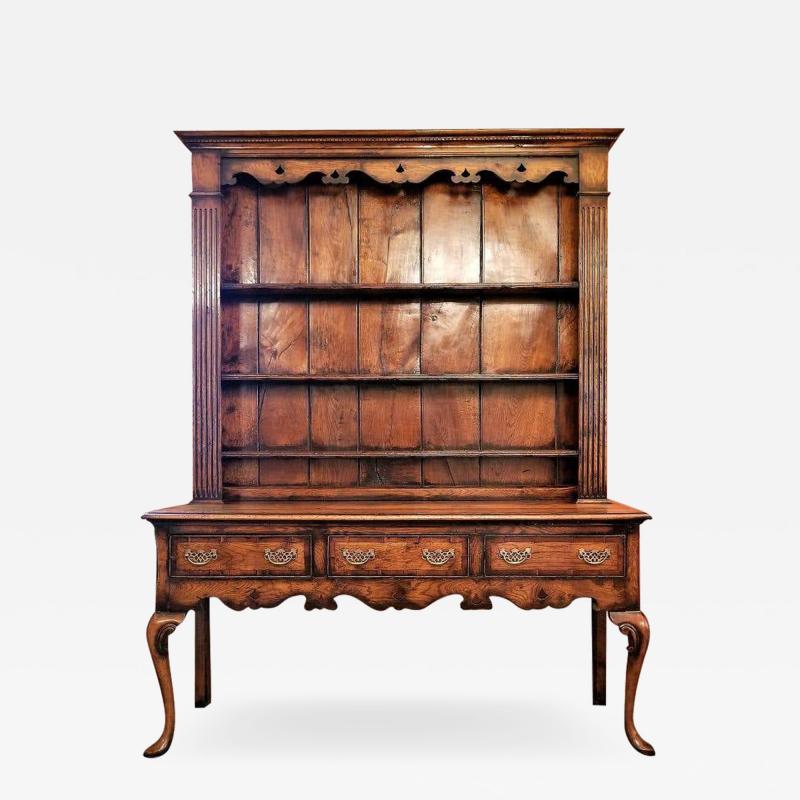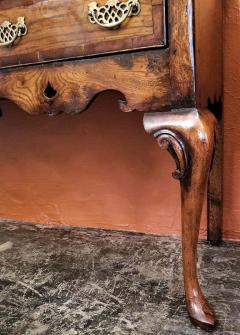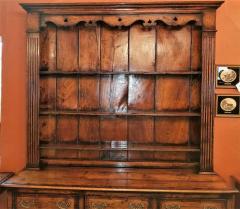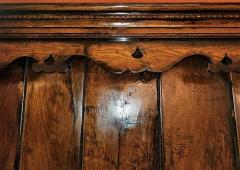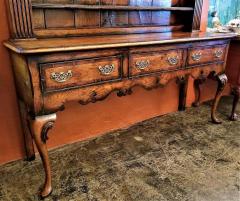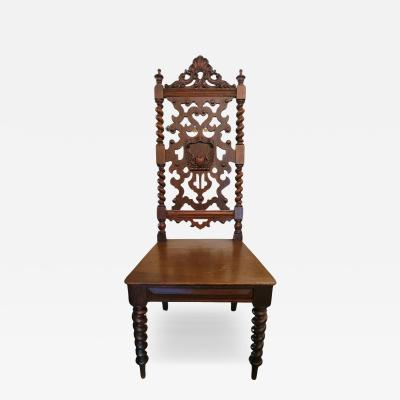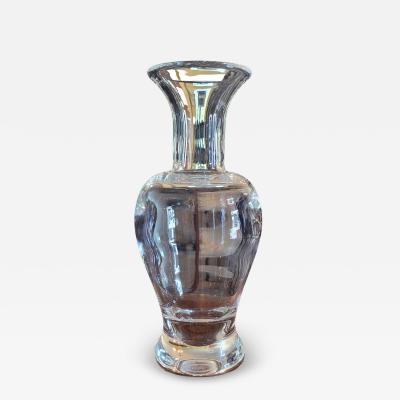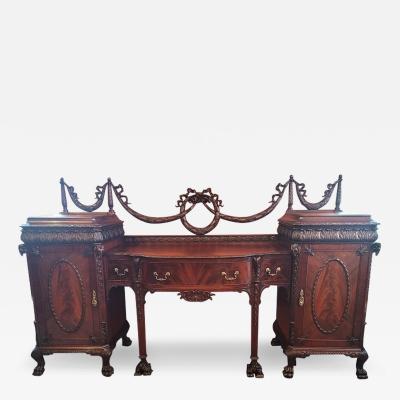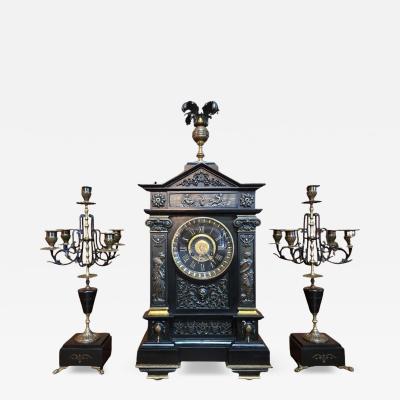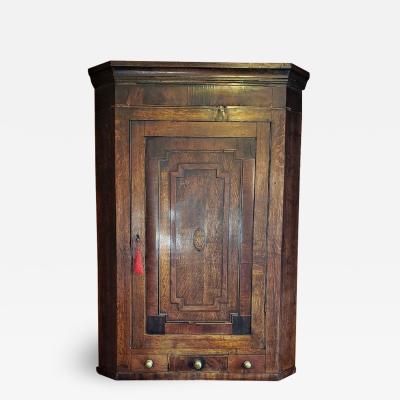18th Century Welsh Dresser
-
Description
Presenting a stunning example of an 18th century welsh dresser from circa 1790.
The patina to this piece is simply gorgeous.
Made of elm and sycamore it has glorious natural patina of over 200 years of use and wax.
Georgian … George III Era.
A beautiful Regency style pelmet with indented molding.
A hand carved and pierced frieze or canopy under the pelmet.
Fluted side columns on both sides.
3 Shelves for china display with frove on the shelf for holding the china in place and prevent slippage.
Gorgeous base section with 3 drawers, each inlaid and banded with sycamore, original Georgian brasses.
Hand-carved frieze to the base.
The 2 front legs are carved on the knee and curve outwards to a pointed foot. The back legs are solid square supports.
The rear of the removeable top section has evidence of extremely historic patches again proving originality.
Beautiful Georgian dovetailing to the drawers.
Drawers have oak as the secondary wood.
A Welsh dresser (British English) or a china hutch (American English), sometimes known as a kitchen dresser or pewter cupboard, is a piece of wooden furniture consisting of drawers and cupboards in the lower part, with shelves and perhaps a sideboard on top. Traditionally, it is a utilitarian piece of furniture used to store and display crockery, silverware and pewter-ware, but is also used to display general ornaments. Originally, a dresser was located in the kitchen and was a utilitarian piece of furniture where meat and other food was dressed or prepared, while prepared food was placed on sideboards in the dining room ready to be served. They could be modified to suit local needs; for example, dressers in the Scottish Highlands may have a “porridge drawer”—a tin lined drawer into which freshly made porridge was emptied and left to cool. When cold, slices of the porridge could be cut out and taken out of the house for later consumption. Gradually the purely utilitarian function of the dresser was supplemented with other functions, such as a means of displaying the best crockery in a farmhouse. Once it became a means of display the dresser could also be found in dining rooms where it served as sideboard and a place to store and display dinner ware. In the 19th century various different styles of ceramics would evolve to fill the plate racks of the Welsh dressers of Wales and to meet the needs of the Welsh market. Furthermore, many local traditions of what constitutes the proper care and display of the items on a Welsh dresser would come to assume an important role in the culture of North Wales in particular. -
More Information
Origin: Wales Period: 18th Century Materials: Elm, Sycamore, Brass Condition: Good. Very good original condition. Creation Date: 1790 Styles / Movements: Traditional, George III Incollect Reference #: 416164 -
Dimensions
W. 68 in; H. 88 in; D. 19 in; W. 172.72 cm; H. 223.52 cm; D. 48.26 cm;
Message from Seller:
Rockwell Antiques, located at 1500 Market Center Blvd., Dallas, TX 75207, specializes in high-end antiques, fine art, and collectibles from around the world. Contact us at 972.685.0808 or rockwellantiquesdallas@gmail.com to explore our personally curated treasures with rich provenance and history.
Sold















